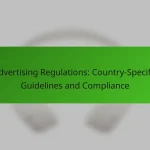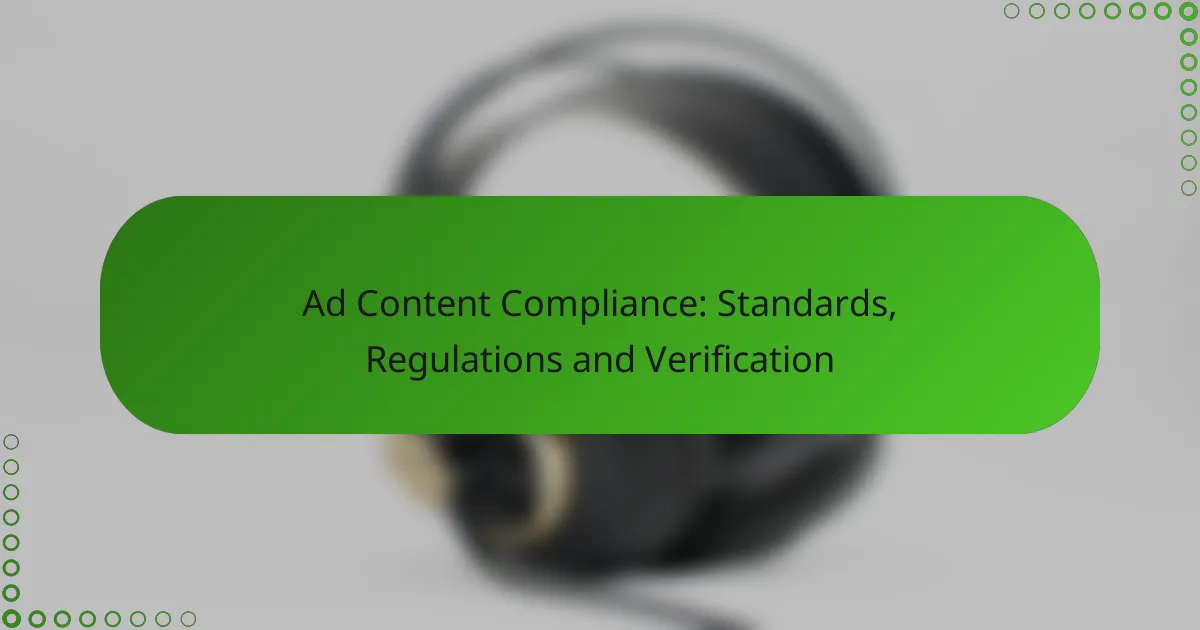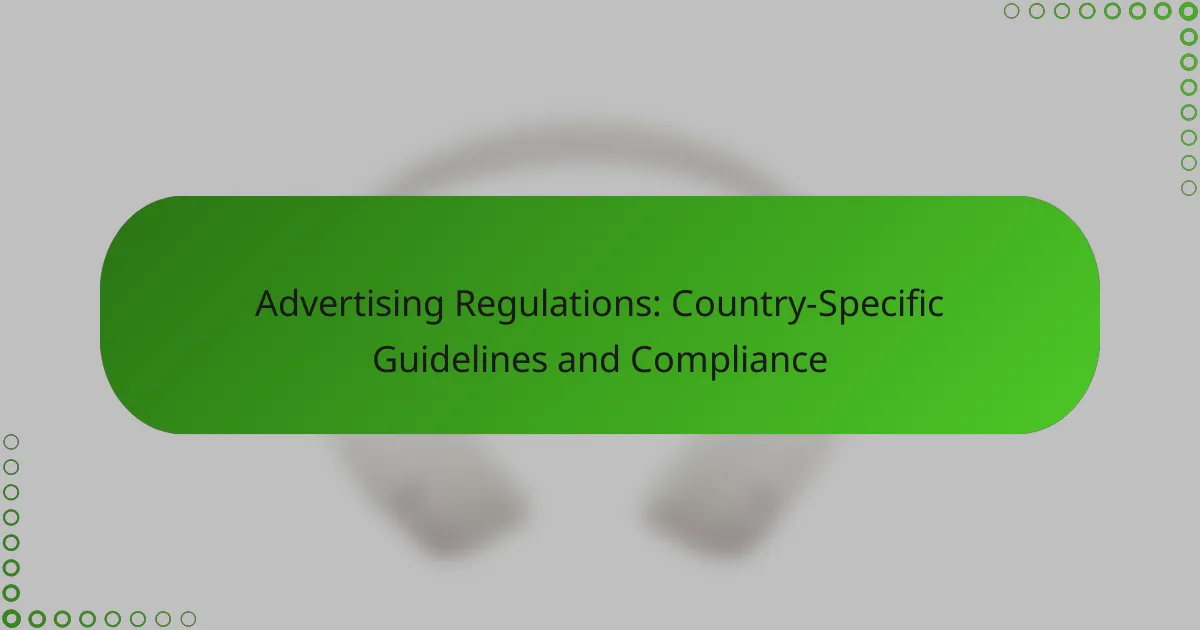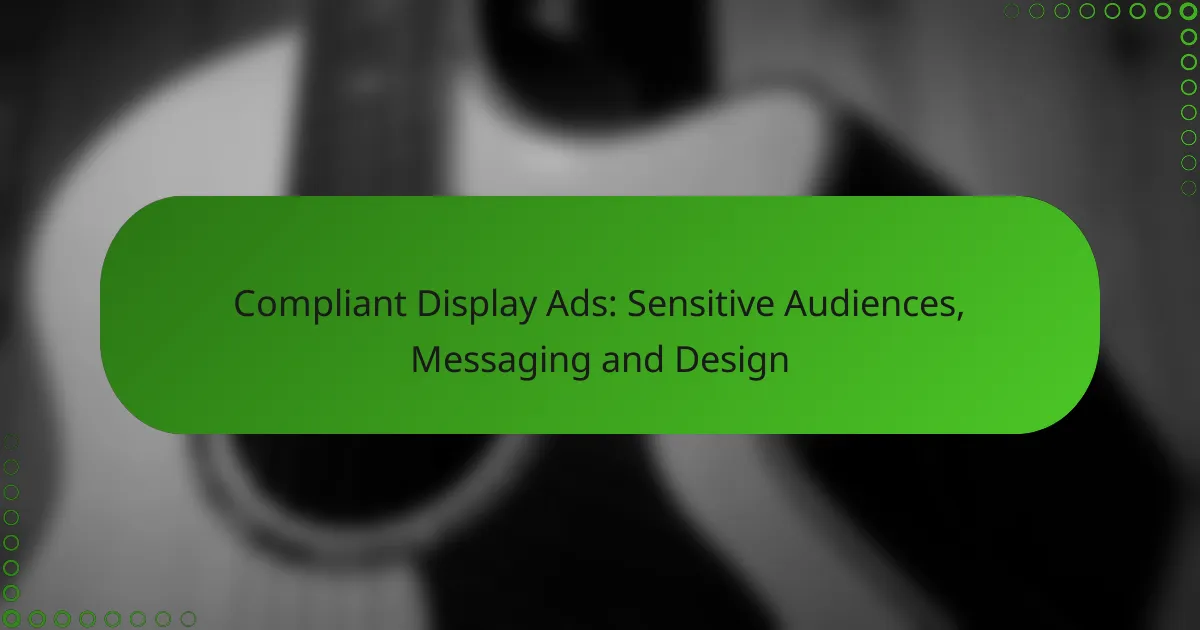Ad content compliance is crucial for maintaining ethical advertising practices, ensuring that advertisements are truthful and not misleading. In the United States, various regulatory bodies enforce standards that require necessary disclosures and adherence to guidelines. By implementing systematic processes such as audits and compliance training, advertisers can mitigate the risks associated with non-compliance, which can lead to financial penalties and reputational damage.
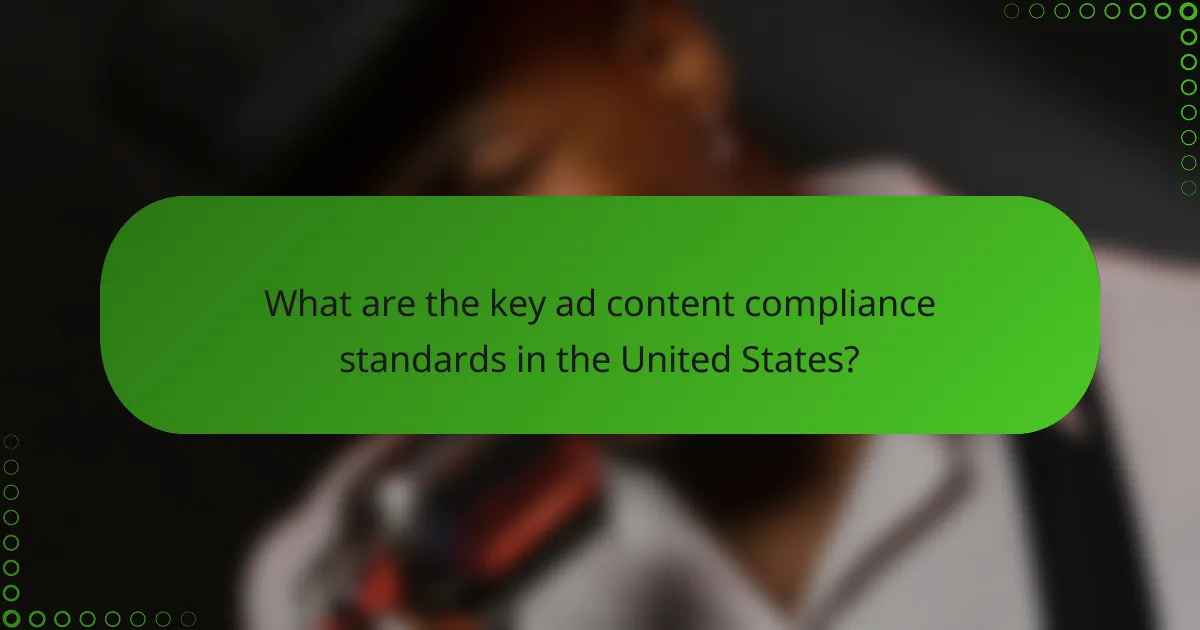
What are the key ad content compliance standards in the United States?
The key ad content compliance standards in the United States focus on ensuring that advertisements are truthful, not misleading, and provide necessary disclosures. These standards are enforced by various regulatory bodies and organizations that set guidelines for ethical advertising practices.
Federal Trade Commission (FTC) guidelines
The Federal Trade Commission (FTC) guidelines are crucial for maintaining transparency in advertising. They require that all advertisements must be truthful and not misleading, with clear disclosures for any material connections between advertisers and endorsers.
Advertisers should ensure that claims made in ads are substantiated, especially when they relate to health, safety, or performance. For example, if an ad claims a product can improve health, it must be backed by scientific evidence.
Digital Advertising Alliance (DAA) principles
The Digital Advertising Alliance (DAA) principles focus on self-regulation in digital advertising. These principles emphasize transparency and consumer control, requiring advertisers to provide clear information about data collection practices and allow users to opt-out of targeted advertising.
Advertisers should implement clear privacy notices and give users easy access to opt-out mechanisms. This can help build trust and ensure compliance with DAA standards, which are increasingly important in a data-driven advertising landscape.
Interactive Advertising Bureau (IAB) standards
The Interactive Advertising Bureau (IAB) standards provide a framework for digital advertising practices, including guidelines for ad formats, measurement, and data usage. These standards help ensure consistency and quality across the digital advertising ecosystem.
Adhering to IAB standards can improve campaign effectiveness and user experience. For instance, using standardized ad sizes can enhance compatibility across various platforms and devices, making it easier for advertisers to reach their target audience effectively.
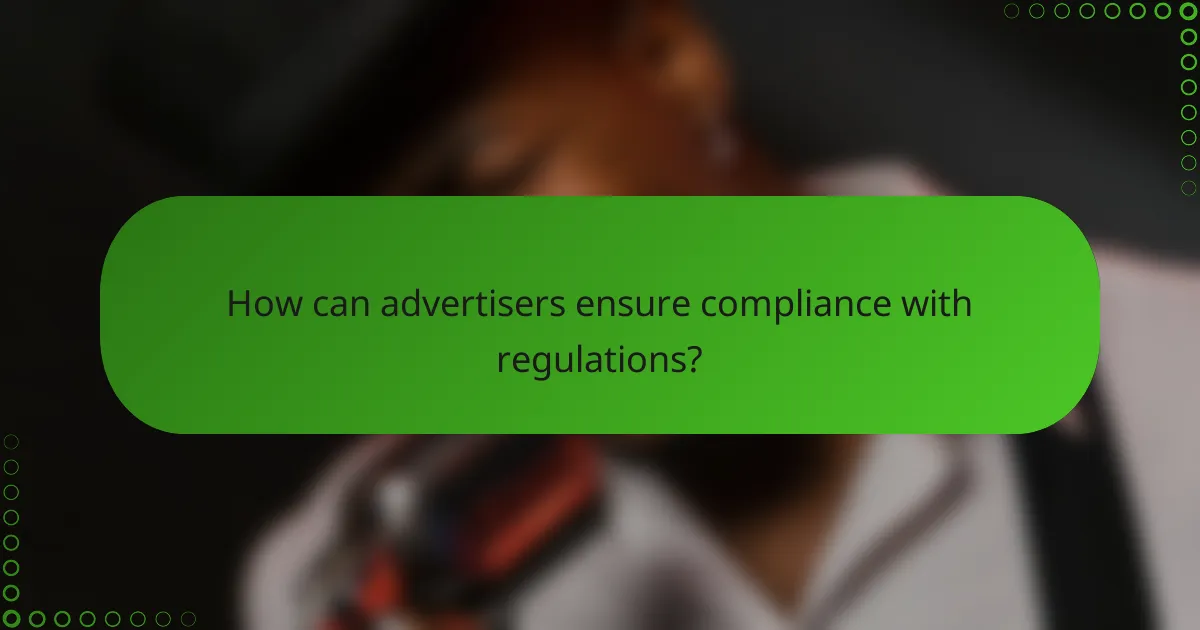
How can advertisers ensure compliance with regulations?
Advertisers can ensure compliance with regulations by implementing systematic processes that include regular audits, utilizing compliance software, and training marketing teams. These strategies help maintain adherence to advertising standards and mitigate the risk of non-compliance penalties.
Regular audits of ad content
Conducting regular audits of ad content is essential for identifying compliance issues before they escalate. These audits should review advertisements against current regulations and internal standards, ensuring that all claims are substantiated and that no misleading information is presented.
Audits can be scheduled quarterly or bi-annually, depending on the volume of advertising content produced. A checklist can streamline the process, focusing on key areas such as truthfulness, substantiation, and appropriate disclaimers.
Utilizing compliance software solutions
Compliance software solutions can automate the monitoring of ad content, making it easier to identify potential violations. These tools often include features like real-time alerts for non-compliance risks and comprehensive reporting capabilities.
When selecting compliance software, consider factors such as integration with existing marketing platforms, user-friendliness, and the ability to stay updated with changing regulations. Many solutions offer customizable templates that align with specific industry standards.
Training for marketing teams
Training marketing teams on compliance standards is crucial for fostering a culture of accountability. Regular workshops can educate team members about relevant regulations and best practices in advertising.
Consider implementing a training program that includes case studies, role-playing scenarios, and assessments to reinforce learning. This proactive approach can significantly reduce the likelihood of compliance issues arising from misunderstandings or lack of knowledge.

What are the consequences of non-compliance?
Non-compliance with advertising content regulations can lead to significant repercussions, including financial penalties, damage to brand reputation, and increased scrutiny from regulatory bodies. These consequences can severely impact a business’s operations and market position.
Fines and penalties
Fines for non-compliance can vary widely depending on the severity of the violation and the jurisdiction. In many cases, penalties can range from hundreds to millions of dollars, particularly for repeat offenders. Businesses should be aware of specific regulations applicable in their region to avoid hefty fines.
For example, in the United States, the Federal Trade Commission (FTC) can impose fines for misleading advertisements, while in the European Union, violations of the General Data Protection Regulation (GDPR) can result in penalties up to 4% of annual global turnover.
Reputational damage
Non-compliance can lead to significant reputational harm, which may take years to repair. Customers are increasingly aware of ethical standards, and a single incident can erode trust and loyalty. Brands may find themselves facing public backlash, negative media coverage, and loss of customer base.
For instance, companies that are found guilty of false advertising may see a decline in sales and customer engagement, as consumers prefer brands that demonstrate integrity and transparency.
Increased scrutiny from regulators
Once a company is flagged for non-compliance, it often faces heightened scrutiny from regulatory agencies. This can lead to more frequent audits and a closer examination of marketing practices, which can strain resources and divert attention from core business activities.
Moreover, ongoing scrutiny can result in stricter regulations being imposed on the company, making it essential to establish robust compliance measures to avoid future issues. Regular training and updates on advertising standards can help mitigate these risks.

What verification processes are available for ad content?
Ad content verification processes ensure compliance with standards and regulations, helping businesses avoid penalties and maintain credibility. Common methods include third-party verification services, automated compliance tools, and manual review processes.
Third-party verification services
Third-party verification services provide an independent assessment of ad content to ensure it meets industry standards and regulations. These services typically involve a thorough review by experts who analyze the content for compliance with legal requirements and ethical guidelines.
Using a third-party service can enhance trust with consumers and stakeholders, as it demonstrates a commitment to transparency. However, businesses should consider the costs associated with these services, which can vary widely depending on the complexity of the ad and the provider.
Automated compliance tools
Automated compliance tools use software to scan ad content for potential violations of regulations and standards. These tools can quickly identify issues such as misleading claims, inappropriate language, or non-compliance with specific advertising laws.
While automated tools can save time and reduce human error, they may not catch every nuance of compliance. Businesses should use these tools as a first line of defense, complemented by human oversight to ensure comprehensive verification.
Manual review processes
Manual review processes involve human reviewers who evaluate ad content for compliance. This method allows for a nuanced understanding of context and subtleties that automated tools may miss, making it particularly valuable for complex or sensitive content.
However, manual reviews can be time-consuming and resource-intensive. Companies should establish clear guidelines and checklists to streamline the review process and ensure consistency across all ad content. Balancing manual reviews with automated tools can optimize efficiency while maintaining compliance.

What role do industry organizations play in ad compliance?
Industry organizations are crucial in ensuring ad compliance by establishing standards and guidelines that advertisers must follow. They help maintain ethical practices and protect consumers by promoting transparency and accountability in advertising.
Setting best practices
Industry organizations develop best practices that serve as benchmarks for advertisers. These practices often include guidelines on truthful representation, appropriate targeting, and responsible messaging. For example, organizations may recommend that ads clearly disclose any sponsorship or paid content to avoid misleading consumers.
By adhering to these best practices, companies can enhance their credibility and reduce the risk of regulatory scrutiny. Regular updates to these guidelines ensure they remain relevant in a rapidly changing advertising landscape.
Providing resources and training
Industry organizations offer a variety of resources and training programs to help advertisers understand compliance requirements. These may include workshops, webinars, and comprehensive guides that outline legal obligations and ethical considerations in advertising.
Additionally, organizations often provide tools for self-assessment, allowing companies to evaluate their compliance status. Engaging with these resources can help advertisers avoid common pitfalls and ensure their campaigns align with industry standards.
